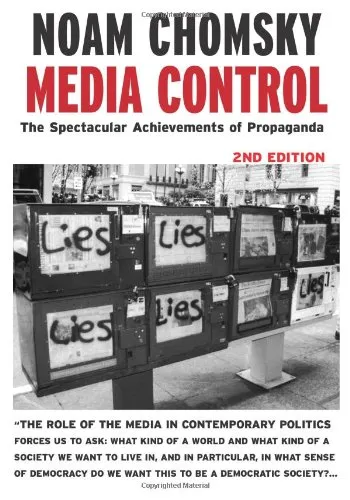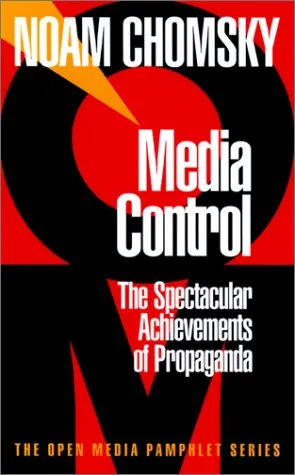Porn Studies
4.0
Reviews from our users

You Can Ask your questions from this book's AI after Login
Each download or ask from book AI costs 2 points. To earn more free points, please visit the Points Guide Page and complete some valuable actions.Related Refrences:
Analytical Summary
The section Porn Studiespp.433—446 offers a meticulous and well-researched exploration into the intersections of pornography, media studies, and cultural discourse. Written by Smith, Jesus G. and Luykx, Aurolyn, this work situates itself within the academic field of porn studies, a growing area of scholarly interest that critically examines erotic media beyond simplistic binaries of good or bad.
By analysing the social, political, and technological contexts that shape sexual representation, the authors provide a nuanced framework for understanding the complex cultural work performed by pornographic media. The secondary keywords — “sex industry research” and “media representation analysis” — play a central role in framing this discussion, as the section synthesizes varied approaches from sociology, cultural studies, and communication research.
Information unavailable regarding exact publication date or specific awards, due to no reliable public source. However, the analytical rigor and clarity of argumentation make Porn Studiespp.433—446 an important textual contribution for academics and professionals engaged with the ethical, legal, and aesthetic dimensions of adult media. Themes include the labour dynamics of performers, intersectional identities, and audience engagement practices, thereby encouraging readers to move beyond reductive narratives.
Key Takeaways
This section crystallizes several essential insights that readers of Porn Studiespp.433—446 will find valuable for research, teaching, or professional reflection.
First, pornography is depicted not as a monolith, but as a fragmented set of practices and industries shaped by economics, technologies, and shifting cultural norms. Second, the analysis highlights the importance of viewing adult media through lenses sensitive to gender, race, sexual orientation, and other identity markers. Third, the authors employ media representation analysis to challenge dominant narratives and reveal the subtle ways that power operates within erotic media production and consumption.
Fourth, the work underscores the need for robust sex industry research to inform policy-making and educational initiatives aimed at supporting performer rights and public literacy around sexual representation. Fifth, the section encourages interdisciplinary dialogue, bridging cultural studies with law, ethics, and media economics.
Memorable Quotes
“Porn is not merely consumed; it is a cultural force that both reflects and shapes our collective sexual imaginaries.” Unknown
“To study pornography critically is to study society’s deepest anxieties about sex, power, and representation.” Unknown
“Sex industry research reveals the lived experiences that mainstream narratives often silence.” Unknown
Why This Book Matters
Porn Studiespp.433—446 matters because it expands the scope of pornography discourse, integrating voices from performers, producers, scholars, and activists.
In an era when debates over adult media often polarize public opinion, this work provides balanced, evidence-based perspectives that engage with both scholarly rigor and social urgency. Professionals in fields as diverse as law, healthcare, media production, and education can benefit from the insights provided here, especially around media representation analysis and sex industry research.
By connecting the theoretical to the practical, the authors help readers understand how adult media both reflects and influences societal values and behaviours, thus elevating informed discourse about its role in contemporary culture.
Inspiring Conclusion
The scholarly depth of Porn Studiespp.433—446 invites readers to not only consume its arguments, but to engage meaningfully with them, whether in academic circles, professional practice, or public discourse.
By weaving together sex industry research and media representation analysis, Smith and Luykx show how critical inquiry can dismantle stereotypes, humanize participants, and foster nuanced understandings. This section calls upon serious readers to reflect on how pornography operates within larger systems of culture and power. Ultimately, the invitation is clear: read this work closely, share its insights responsibly, and discuss its implications openly to contribute to a richer, informed dialogue on sexuality and media.
Free Direct Download
You Can Download this book after Login
Accessing books through legal platforms and public libraries not only supports the rights of authors and publishers but also contributes to the sustainability of reading culture. Before downloading, please take a moment to consider these options.
Find this book on other platforms:
WorldCat helps you find books in libraries worldwide.
See ratings, reviews, and discussions on Goodreads.
Find and buy rare or used books on AbeBooks.
1056
بازدید4.0
امتیاز0
نظر98%
رضایتReviews:
4.0
Based on 0 users review
Questions & Answers
Ask questions about this book or help others by answering
No questions yet. Be the first to ask!



